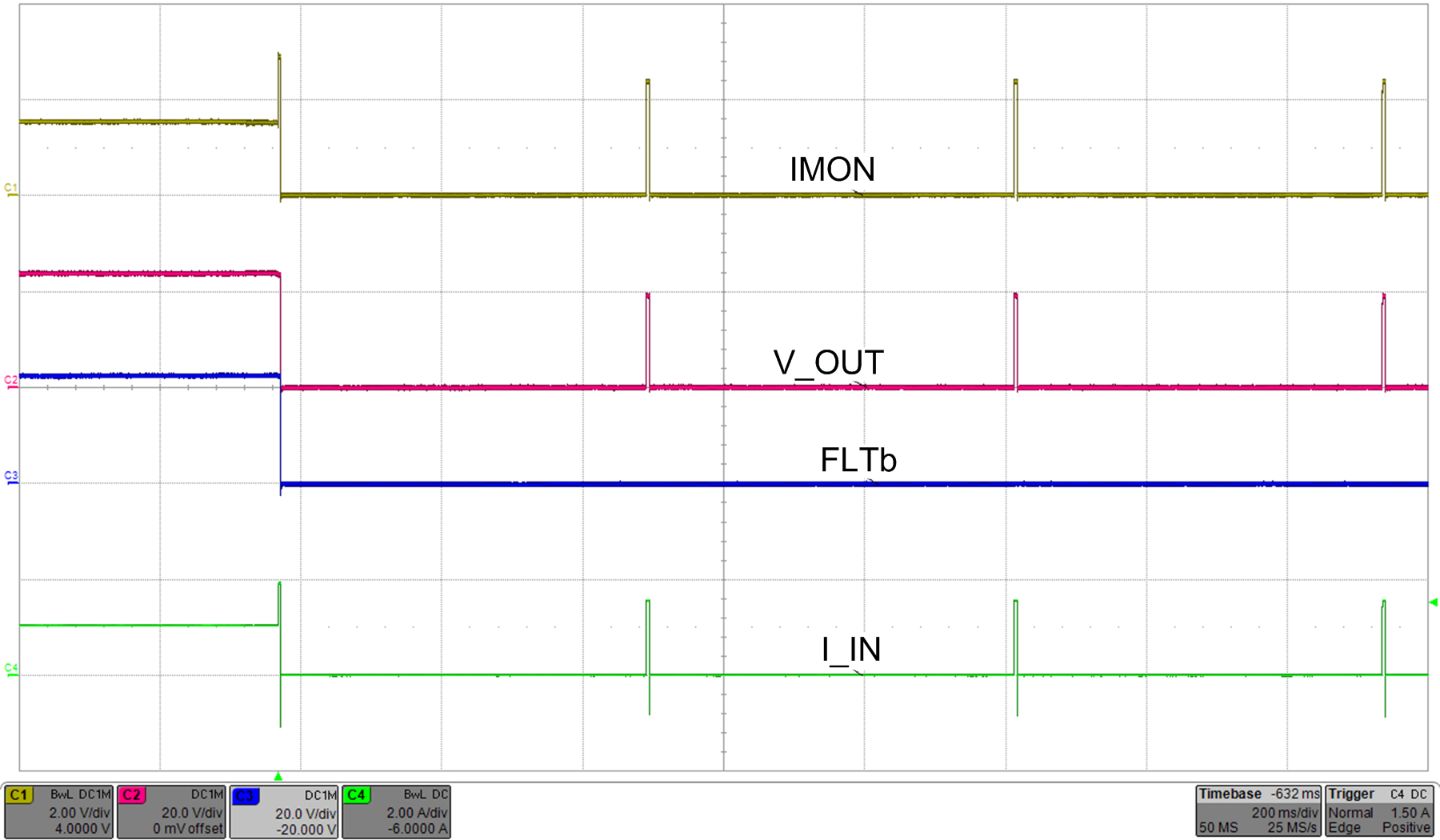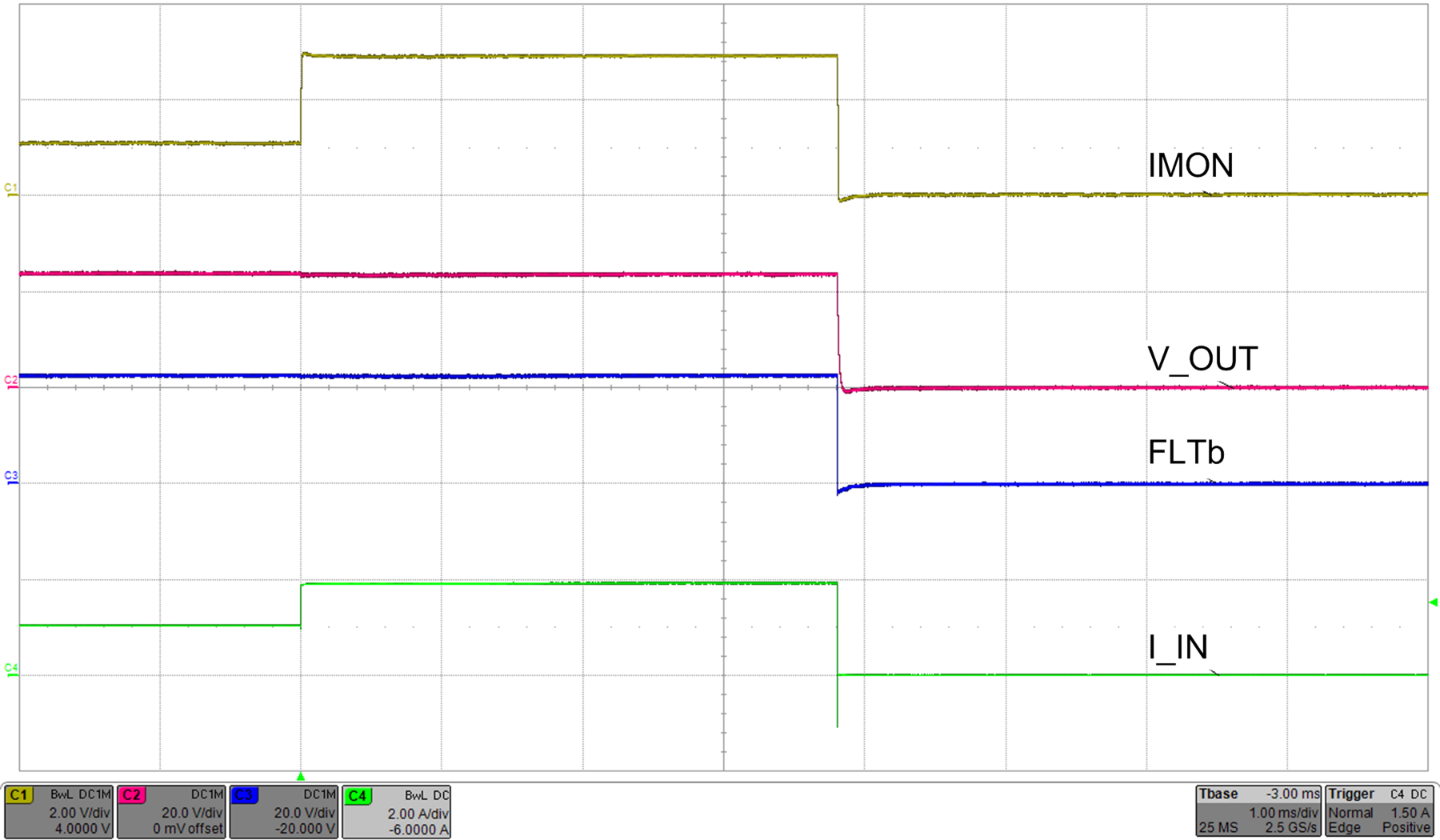SLVSFQ6A November 2020 – June 2021 TPS2640
PRODUCTION DATA
- 1 Features
- 2 Applications
- 3 Description
- 4 Revision History
- 5 Device Comparison
- 6 Pin Configuration and Functions
- 7 Specifications
- 8 Parameter Measurement Information
-
9 Detailed Description
- 9.1 Overview
- 9.2 Functional Block Diagram
- 9.3
Feature Description
- 9.3.1 Undervoltage Lockout (UVLO)
- 9.3.2 Overvoltage Protection (OVP)
- 9.3.3 Reverse Input Supply Protection
- 9.3.4 Hot Plug-In and In-Rush Current Control
- 9.3.5 Overload and Short Circuit Protection
- 9.4 Device Functional Modes
-
10Application and Implementation
- 10.1 Application Information
- 10.2 Typical Application
- 10.3 System Examples
- 10.4 Do's and Dont's
- 11Power Supply Recommendations
- 12Layout
- 13Device and Documentation Support
- 14Mechanical, Packaging, and Orderable Information
Package Options
Mechanical Data (Package|Pins)
Thermal pad, mechanical data (Package|Pins)
- PWP|16
Orderable Information
9.3.5.1.2 Electronic Circuit Breaker with Overload Timeout, MODE = OPEN
In this mode, during overload events, the device allows the overload current to flow through the device until I(LOAD) < I(FASTRIP). The circuit breaker threshold I(CB) can be programmed using the R(ILIM) resistor as shown in Equation 4.

where
- I(CB) is circuit breaker current threshold in Ampere
- R(ILIM) is the current limit resistor in kΩ
An internal timer starts when I(CB) < ILOAD < IFASTRIP, and when the timer exceeds tCB(dly), the device turns OFF the internal FET and FLT is asserted. After the internal FET is turned off,
the device commences an auto-retry cycle after 540 ms. The FLT signal remains asserted until the fault condition is removed and the device resumes normal operation. Figure 9-10 and Figure 9-11 illustrate behavior of the system during electronic circuit breaker with auto-retry functionality.

| MODE left floating | Load Transition from 22 Ω to 12 Ω | RILIM = 8 kΩ |

| Load Transition from 22 Ω to 12 Ω , RILIM = 8 kΩ |